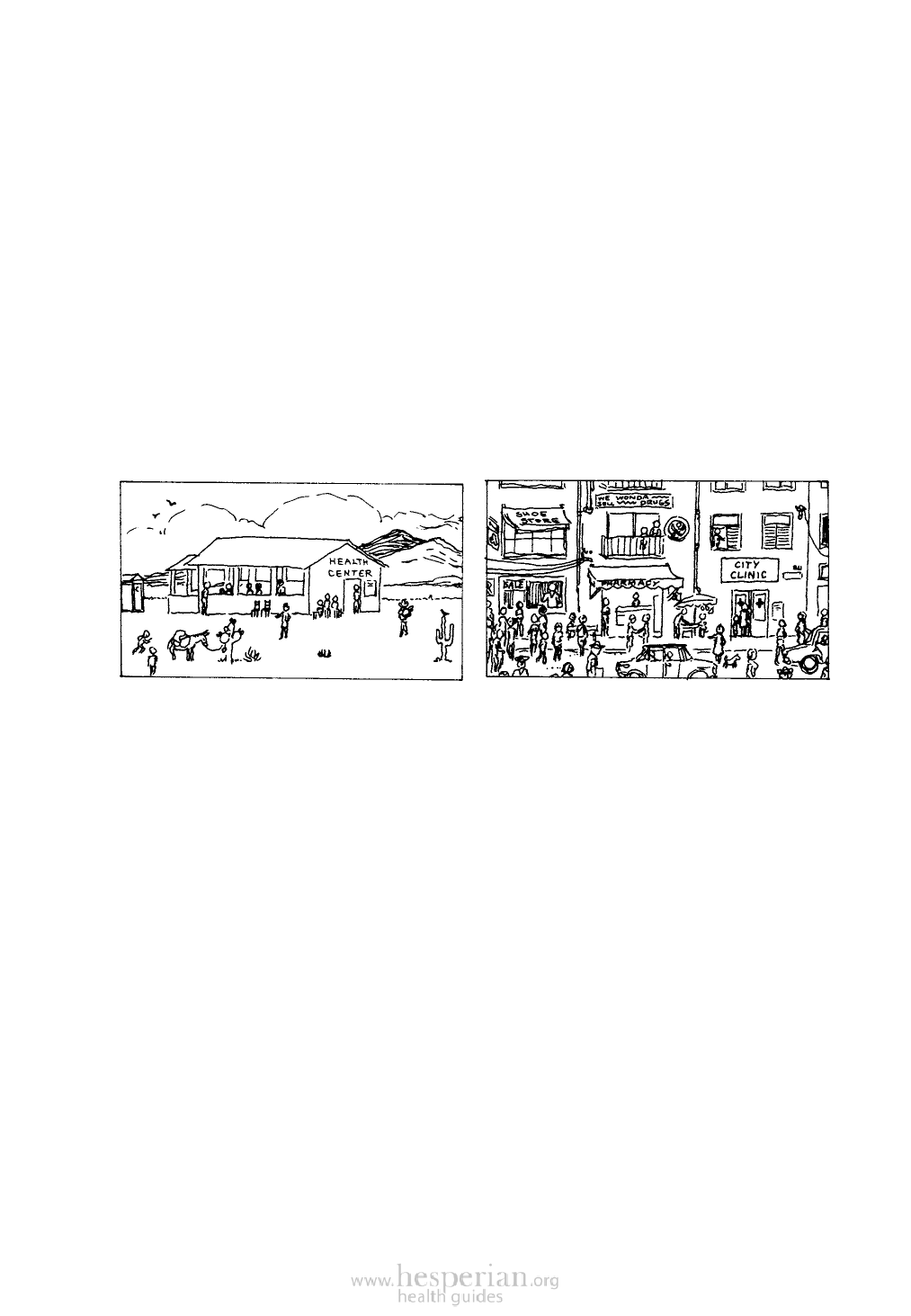
8-5
Generally it is wiser for health workers to gain clinical experience in a
small community health center. Here things are more personal and more flexible.
The staff, the sick and their families, and the health workers have more chance to
learn about each other—not just as ‘problems’ and ‘problem solvers’, but as fellow
human beings. They can all begin to care for and about each other.
In a small rural clinic, however, there may not be a wide enough range of
problems for health workers to gain adequate experience.
Ideally, perhaps, students should have a chance to learn in both a small,
unhurried village setting, and in a health center large and busy enough so that they
can see a broad range of problems and persons.
A community-based program in Nuevo Leon, Mexico (Tierra y Libertad) has
managed to do this. Training is based in a small village. But the students take
turns spending time in a busy community health center in a poor neighborhood
in the nearby city of Monterrey.
Classroom preparation
It is a good idea to begin clinical practice early in the course. So classroom
preparation for this also needs to begin early. Classes might include:
• clinical ethics (relating to the sick as persons, not ‘patients’)
• basic teaching and communicating skills to help in understanding needs and
explaining things clearly to a sick person and his family
• how to examine a sick person (see Where There Is No Doctor, Ch. 3)
• how to take care of a sick person (see WTND, Ch. 4)
• practice in using record sheets (see Ch. 21)
• solving problems step by step (scientific method, Ch. 17)
• diagnosis, treatment, and prevention of common illnesses and injuries
(based on local needs and resources)
• proper use and measurement of medicines (see WTND, Ch. 5, 6, 7, and 8)
• preventive measures for specific health problems
In classroom study of these subjects, the closer the learning situation can be to
the real-life situation, the better. Through role plays and sociodramas, students can
practice all the above skills in a lifelike way. A checklist, or list of review questions,
can be used to evaluate how well the students do (see page 8-10).